Hypoxia can lead to severe complications if not addressed promptly and effectively. As healthcare professionals, understanding the complexities of managing hypoxia is crucial to providing high-quality care. This training course is designed to equip healthcare personnel with the knowledge and practical skills needed to recognize, assess, and manage hypoxic patients. From identifying early signs of hypoxia to implementing appropriate interventions, this comprehensive training will empower healthcare providers to act decisively. Take this course to enhance your skills for one of healthcare’s most pressing challenges.
What You Will Learn:
- Common conditions and situations that lead to hypoxia
- Early and late signs and symptoms of hypoxia in patients
- Thorough respiratory and cardiovascular assessments to identify signs of hypoxia
Details:
Course length: 45 minutes; CME: 0.75
Languages: American English
Key features: Audio narration, learning activity, and post-assessment.
American Medical Compliance is accredited by the Accreditation Council for Continuing Medical Education (ACCME) to provide continuing medical education to physicians. Our Continuing Medical Education (CME) program is committed to enhancing the knowledge, skills, and professional performance of healthcare providers to improve patient care outcomes. Through high-quality educational activities, we aim to address the identified educational gaps and to support the continuous professional development of our medical community. American Medical Compliance designates this activity for a maximum of 0.75 AMA PRA Category 1 Credits. Physicians should only claim this credit for their complete participation in this activity.
Get Certified
American Medical Compliance (AMC) is a leader in the industry for compliance, Billing, and HR solutions. To become certified, please visit us at: American Medical Compliance (AMC).
Reach out for other courses by visiting the AMC Course Library.
Understanding Hypoxia
Hypoxia occurs when oxygen levels are insufficient at the tissue level to maintain adequate homeostasis. This condition can stem from a variety of causes, including hypoventilation or right-to-left shunting. Each of these mechanisms can lead to an imbalance in the oxygen exchange process.
One of the key factors contributing to hypoxia is inadequate oxygen delivery to the tissues, which may result from either low blood supply or low oxygen content in the blood. Hypoventilation, for example, can reduce the amount of oxygen reaching the lungs, while V/Q mismatch occurs when there is poor coordination between ventilation and perfusion in the lungs. Right-to-left shunting involves the diversion of blood away from the lungs.
Understanding the causes and underlying pathophysiology of hypoxia is essential for healthcare professionals in order to effectively diagnose this life-threatening condition.
Cerebral Hypoxia
Cerebral hypoxia occurs when there is an insufficient supply of oxygen to the brain. The brain, being one of the most oxygen-dependent organs, requires a constant flow of oxygen to perform its complex functions. Even short periods of reduced oxygen can result in impaired cognitive function.
When oxygen levels in the brain drop, neurons are the first cells to suffer. Prolonged cerebral hypoxia can lead to confusion, unconsciousness, and ultimately, coma or death. As healthcare providers, it is vital to recognize the signs of cerebral hypoxia early and implement appropriate interventions to restore oxygen supply.
Pathophysiology of Hypoxia
The pathophysiology of hypoxia involves a complex interplay of factors that result in inadequate oxygen delivery. Oxygen is essential for cellular respiration. When oxygen levels fall below the required threshold, cells are unable to efficiently generate energy.
At the cellular level, hypoxia triggers several adaptive responses, including increased production of erythropoietin and activation of anaerobic metabolic pathways. However, these compensatory mechanisms have limits, they may not be sufficient to prevent tissue damage.
The severity of hypoxia can vary depending on the cause. For instance, in conditions such as hypoventilation, the problem lies with the respiratory system’s ability to deliver oxygen to the blood. In more severe cases, such as with right-to-left shunting, blood bypasses the lungs entirely. Understanding the pathophysiological mechanisms of hypoxia is critical in determining the appropriate course of treatment.
Impact on Tissue Homeostasis
The term hypoxia refers to the condition in which tissues are exposed to oxygen deficiency. Homeostasis is the process by which the body maintains stable internal conditions necessary for cellular health. Oxygen plays a crucial role in sustaining these conditions, which generates the energy required for normal cell activities.
When oxygen levels drop below the required threshold, cells and tissues begin to malfunction, leading to metabolic disruptions. This oxygen deficiency impairs the ability of cells to carry out essential functions such as protein synthesis and energy production. The failure to maintain homeostasis at the cellular level ultimately affects the entire tissue, organ, and system function.
Indications for Hypoxia Management
Identifying hypoxia early is crucial for timely intervention. The indications for managing hypoxia typically arise from clinical signs and symptoms. Healthcare providers should be vigilant for the following indications:
- Changes in Vital Signs: A decrease in oxygen saturation levels below the normal range is a primary indication of hypoxia. Other vital signs can also signal that the body is compensating for oxygen deficiency.
- Cyanosis: Bluish discoloration of the skin is a late sign of severe hypoxia, indicating a critical reduction in oxygen levels.
- Altered Mental Status: Hypoxia can lead to confusion, agitation, dizziness, or even loss of consciousness.
- Respiratory Distress: Shortness of breath, labored breathing, and use of accessory muscles are common signs of hypoxia.
- Fatigue and Weakness: Chronic hypoxia can cause persistent tiredness and muscle weakness.
Recognizing these indicators early can significantly improve outcomes by allowing healthcare providers to take swift action in restoring adequate oxygenation.



